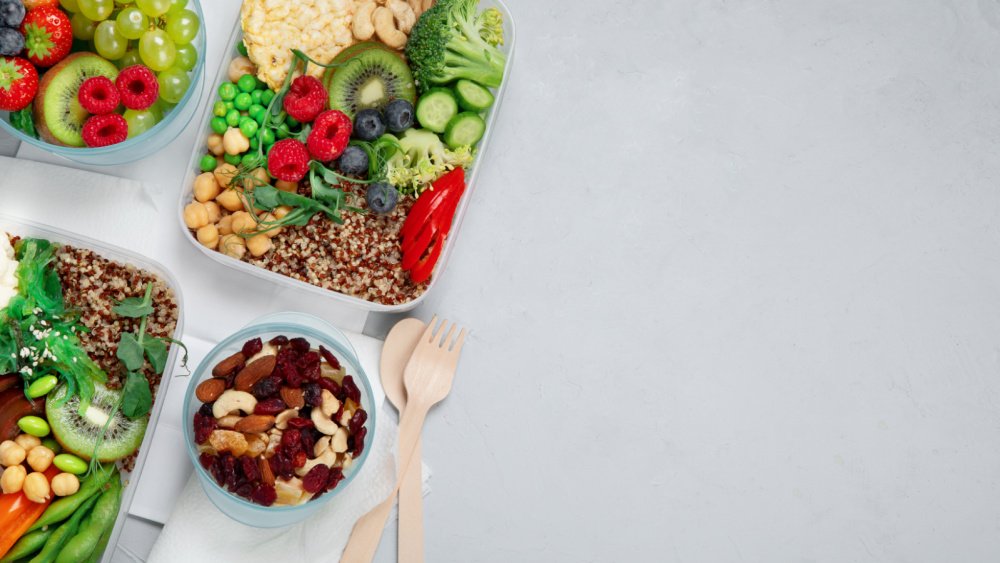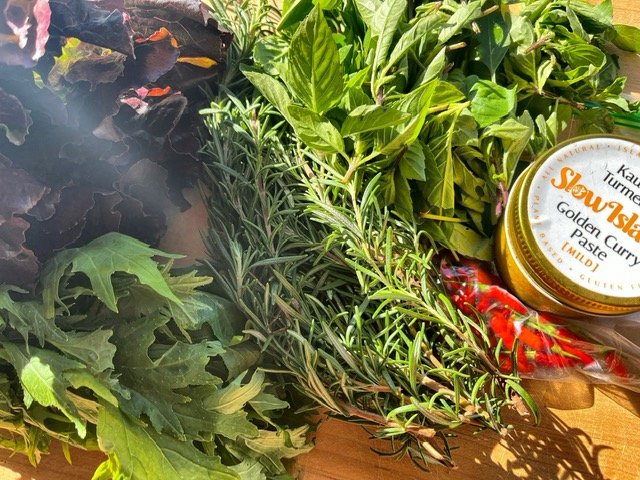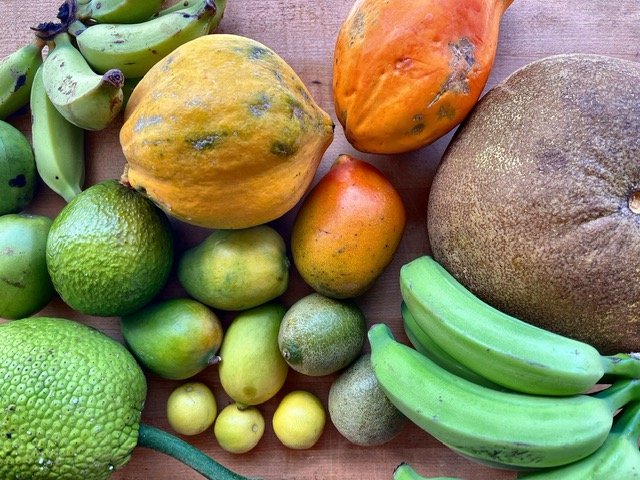Warning: this is a LONG post, but I’ve written it this way to include as many of my healthy food, travel tips as possible! Pick away at it and take whatever info resonates best for you 😉
I am often asked how we manage good food while on the road.
First of all, let me say this:
If it’s a priority to you, you can make it happen.
Before my family and I even travel, we consider what our food options will look like wherever we are going and often base our decisions, at least in part, on whether or not we will have access to good food and clean water. And then we plan accordingly for the journey along the way.
A Side Note Here:
I have a 14 year old son that I don’t go on many trips without. At this point, he is demanding more autonomy with regards to food choices, and many of them are in a push back response to the healthy food focus we’ve had in our home his whole life. I respect this and understand that he needs to have his own journey with food. So, these days, I consider what his wants will be around food for travelling: he wants to try more restaurant food than I am usually comfortable with, he likes to be able to grab a few junky snacks for the car ride, and he’ll always say yes to the garbage cookies/pretzels on the plane. So be it.
The point is, that while I do my best to keep our food as real food focused as possible, while travelling and always, I DO make adjustments and exceptions, and I’ve learned how not to dwell on those.
My advice to you is to do the same:
Set good intentions, plan ahead and pack as much real food as you can manage, and when there are exceptions or lazy days, allow them without guilt, AND without losing sight of your health goals completely.
And so, take these tips and modify them to suit YOUR FAMILY. One or two may sound more doable for you, or maybe you want to apply them all. Just remember that you can always make little adjustments to do better. Start where you are right now, then set a few doable goals to improve.
Before You Go
Rent A Place With A Kitchen: Aim to make the majority of your food in your own space. Find a rental unit with a solid kitchen that is well-equipped, has a blender, a full oven, and a full fridge. Your set up at your homebase will dictate how often you eat at home and how often you grab quick meals. While some are better than others, too much restaurant or to-go food is never health supportive, most do not use organic ingredients, regularly use poor quality oils and meats, and in many locations, use many foods with chemical additives/msg.
Find Out Where You Will Buy Food: Before you even book your rental house/unit, figure out what it’s like to buy food: where is the supermarket and what’s it like. Is there a local Organics store of some kind, is there a local place to buy fish or organic/local meat, etc., and how far are these places from where you will be staying.
Research Farmer’s Markets: I cannot say this enough! When you are travelling, support the local economy as much as possible. Shopping at the local farmer’s market is a fantastic way to get to know the local food, ask about food preparations, see the local food culture, and to show that, as a traveller, you are doing your best to support the local community.
Check Out Restaurants/To-Go Food Options: We like to get excited about the little spots we may want to try. If you have a bit of a plan regarding where you might eat out or grab a smoothie, you are better set up for making good choices in this area. If you know you might have an overnight in a hotel somewhere, you may want to see if there is a nearby health food store that offers some breakfast options and organic coffee, etc.
Pack Digestive Enzymes/Relief: For anyone who struggles with digestive discomfort regularly, or even rarely, the chances of meeting with some digestive distress while traveling is particularly high. I always bring along some digestive relief incase of an uncomfortable belly situation (and I often use them). My choice at the moment is Digest Force by Prairie Naturals which includes Activated Charcoal (binding to unwanted substances for detoxification) and Ginger Root Extract (decreases pressure on lower esophageal sphincter, reduces intestinal cramping, and prevents dyspepsia, flatulence, and bloating) - I have no affiliation with this company, I just like their product.
For the Car Ride
Easy to Digest Food: One thing we know for sure is that there will be a LOT of sitting! When you spend long hours in the car, it’s best to eat light and eat foods that are gentle on the GI tract. Some gut friendly road food ideas: fruit, chia pudding (pop into small glass jars with lids), homemade energy balls/cookies, teas and to-go smoothies.
Fruit & Vegetables: Including some fiber on your road trip will help to ensure better digestive comfort and bowel movements while travelling. Think simple: cherry tomatoes, cucumber chunks, celery, carrots, apples, pears, tangerines, banana, etc.
Energy Balls/Bars/Cookies: A make-ahead must in my house, a little goes a LONG way with these yummies. It’s much easier to get a high nutrient dose from an energy ball than a baked good from a bakery. Try some of my Healthy Treats to inspire you!
Noodle/Quinoa/Rice Salad: I have found that this is a pretty efficient way to include some delicious, filling complex carbohydrate foods while keeping things fairly neat in the car. I challenge you to step away from relying on the sandwich simply because those refined carbohydrates are problematic for the body, inflammatory, and do not contain much usable nutrition. I find it easy enough to make a big bowl of quinoa salad (we like THIS one) and pop it into a few containers. Then, we can all just eat small amounts along the way.
Chia Pudding: I am a BIG fan of chia pudding. It’s an amazing way to get a LOT of nutrition without having to consume a large volume. I use full-fat coconut milk, consisting of gut and energy supportive fat, and the chia seeds provide a protein punch and are a muciligen food, which further supports digestive healing.
Popcorn: While popcorn is not very health supportive, it is a crunchy, salty alternative to chips that is now more widely available organic and using healthier oils. Ideally, you make your own at home, popped with coconut oil or in an air popper, but if you are buying some, look for simple ingredients: popcorn, salt, & oil, and healthier high-heat oils: avocado or coconut oil.
For the Plane
Easy to Digest/Light Food: Same as above, keeping things gentle on the digestive system will help you & your family feel better along the journey. Avoid heavier foods like pizza, donuts/baked goods, fried foods, etc. and keep things simple: fresh fruit & vegetables, some quality homemade energy balls, and something satiating like a gluten-free noodle salad, some rice wraps, or a lentil salad/bowl.
High Protein Punch: Be sure to include some foods with protein. Good options: nuts, seeds, lentils/beans (hummus or in a salad), quinoa, chia, nut butters & hemp hearts (in energy balls), or some quality meat/fish.
Energy Balls/Bars/Cookies: An all-time favourite way to include nutrient density in a snack-style format, make ahead a recipe (or double) of your favourite energy balls/bars/cookies, freeze them, then pack some up for your travels. A few of my favs: Sesame Chocolate Power Balls, Bonk Bars, Hippie Trail Cookies.
Nuts: An easy and lovely way to enhance your snack stash, nuts are nutrient dense, high in protein & good quality fat, and don’t take up much room 😉
Fresh Fruit/Vegetables: Keeping pace with your fiber intake, be sure to always have a few fresh fruit & veggie options with you for munching - as mentioned above, this will help keep things regular while travelling.
While You Are Away
Stock Up with Basics: Making sure you have a few of your staples, will ensure that you can make some simple meals at your rental. Some things I like to grab: Coconut Oil for cooking, Olive oil for dressings, Vinegar for dressing, Good quality salt, Maple syrup/Honey for a little sweetness, Brown Rice and/or Quinoa, GF crackers, Hummus, and fresh fruit & vegetables.
Eat Local & Ask Around: The BEST way we’ve found information over the years is to ask the local people. If you want in on some fresh, local fish, find out where to grab it off the boat or straight from the fisherman. Find out about farmers markets or any local places to buy food, whether there are organic options, and what some fun foods might be to try.
Try New Foods: If you spot some strange looking fruit or vegetable or a dish that is popular with the locals, find out what it is and ask about how to prepare it. This is a fun way to immerse yourself in the local culture, and can be a little food challenge at the same time. Maybe you’ll find something you absolutely adore!
Make Smoothies: I am a BIG smoothie fan all the way around. Smoothies are a fantastic way to get a load of nutrients into the body in a smooth and absorbable way. The blending of the smoothie takes a bit of the burden off the digestive system, increasing enzymatic potency, and is the perfect way to add extra greens or supplements to your diet. And kids love smoothies!
Keep it Simple: You don’t really want to be spending much time in the kitchen while on holiday, so set yourself up with some staple ingredients to make mealtimes fairly straightforward and nourishing. The easiest combo that we like a lot is just brown rice + steamed/roasted veg + some protein: beans/lentils/fish, etc.
Maintain a Good Food Rhythm: Keep the normal food rhythm that works for you at home while on holiday. Do not skip meals, bring snacks along with you, eat meals at roughly the same time every day, and try not to eat too late at night. The further off-track you get from your normal food rhythm, the more effects you will see and the harder it will be to get back into it once you are home. This is imperative for the kiddos as well.
Stay Active: Find fun adventures to go on that require you to move your body. Sitting around by the pool is lovely and I fully support that, if that’s what you love, but be sure to balance your down time with movement. If you’re like me and you love a good yoga or fitness class, find something local that you can attend.
Kitchen Tools To Pack
Chef’s Knife: A good knife makes a HUGE difference in the kitchen.
Mesh Nut Milk Bag: I’ll bring this along so that I can make nut milks, to store veggies in the fridge or to shop with, and it also makes a great lettuce spinner in a pinch (place washed lettuce in your mesh bag, go outdoors and swing it around until most of the water has drained).
Small Spatula: Not vital, but very useful, particularly in kitchens that are pretty bare bones.
Spices: An absolute MUST!!! I use small ziplock baggies as I haven’t found a better way yet (if you know of one, please let me in on it!). Choose your most used & favourite spices (not too many!) and pack them in your checked baggage. Most rentals do not include any spices and buying them is very expensive, so this will save you many times over.
Smoothie Mix: If you have some greens powders & maca/collagen/spirulina, etc. that you use in your smoothies at home, you can consider making a mix of all of your addins and popping them into one small container. This way, you’ll have a premade blend of your health boosters and can keep your smoothie rhythm while away and don’t have to buy anything on the go.
Lastly,
Have a most amazing time, be in the moment, relax, breathe deep, find gratitude for the world we live in, all the different people in it, and all the incredible food it has to offer! ♡







